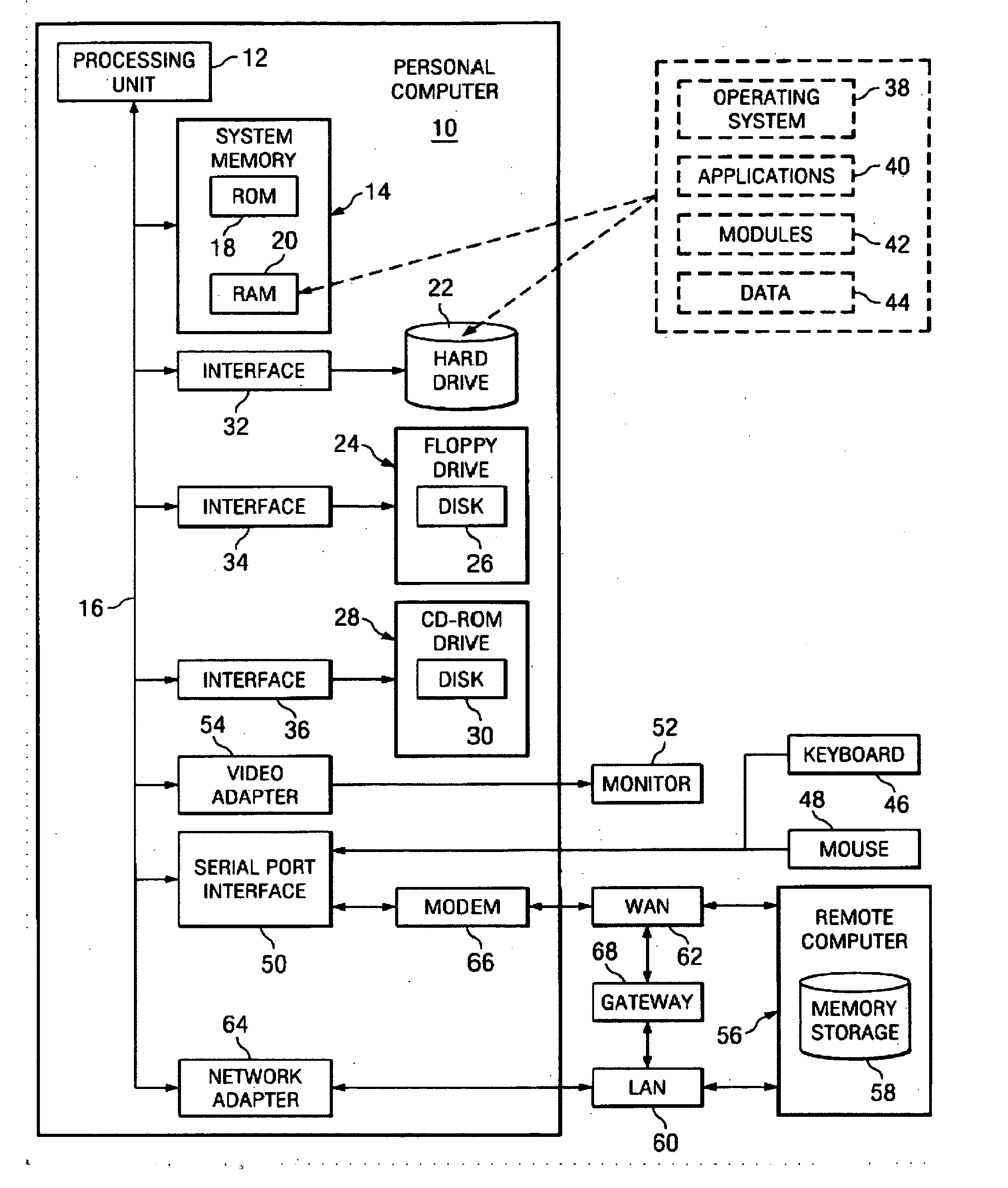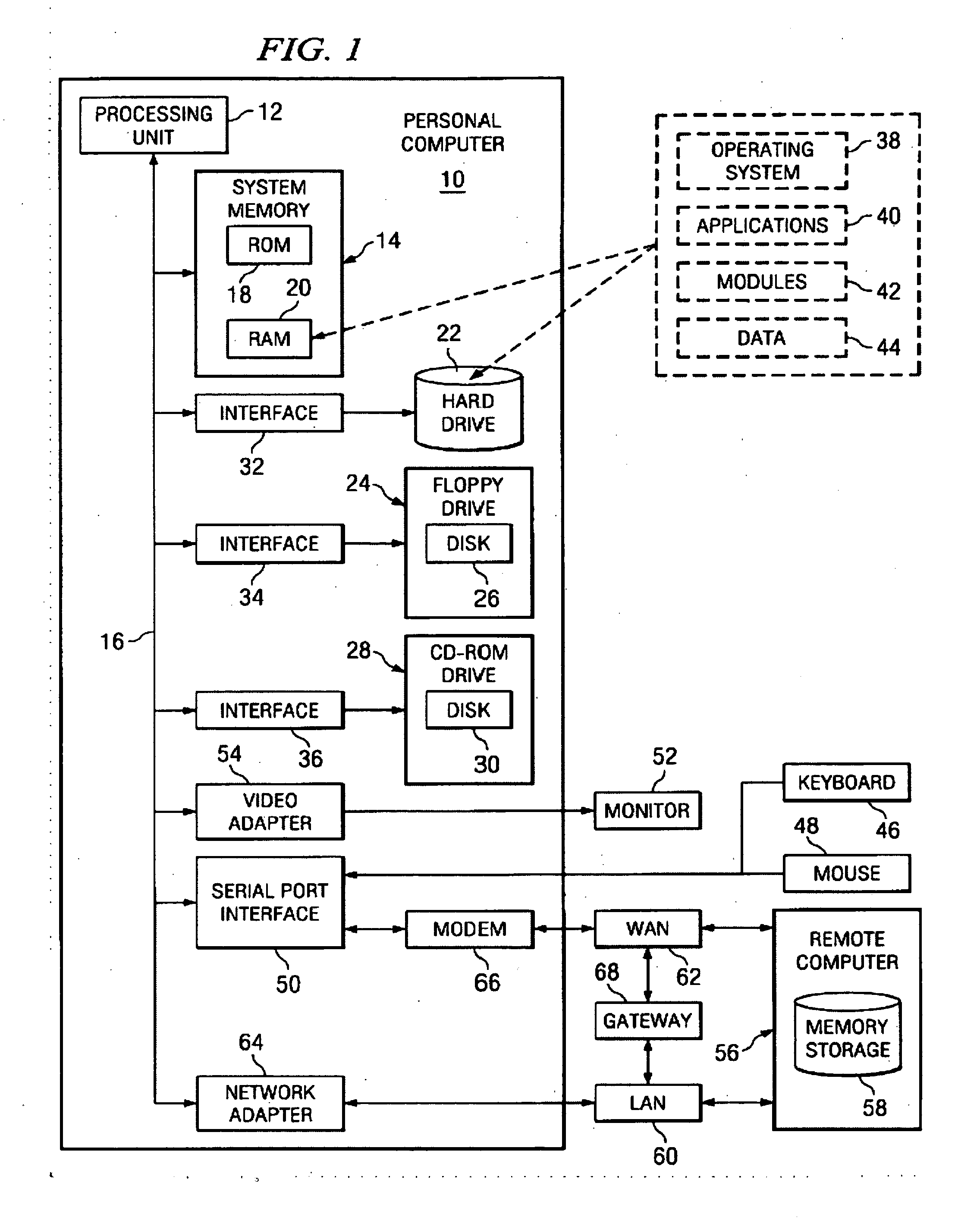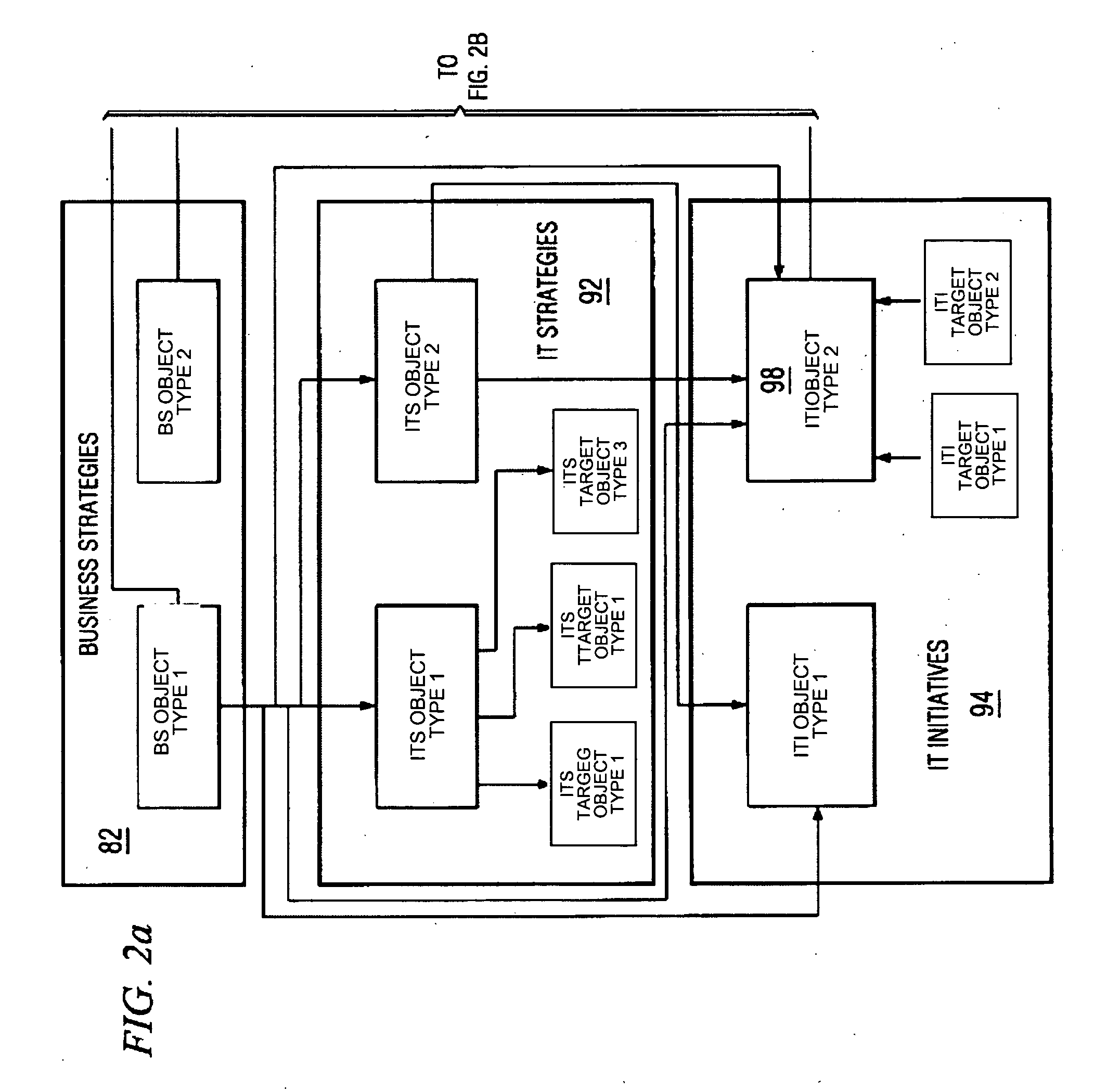Method and system for tailoring metamodel requirements capture processing to varying users
a metamodel and requirements technology, applied in the field of computer modeling software, can solve the problems of not being able to iteratively difficult to change an existing model, and difficulty in modifying the metamodel in an expeditious and interactive way, so as to avoid undue complexity, facilitate the population, and enhance the quality and speed of the metamodel
- Summary
- Abstract
- Description
- Claims
- Application Information
AI Technical Summary
Benefits of technology
Problems solved by technology
Method used
Image
Examples
Embodiment Construction
[0029] The preferred embodiment of the present invention and its advantages are best understood by referring to FIGS. 1 through 15 of the drawings, like numerals being used for like and corresponding parts of the various drawings.
[0030]FIG. 1 illustrates a general-purpose computer 10 that may use the method and system for tailoring metamodel requirements capture processing to varying users. General-purpose computer 10 may be used as a stand-alone computer or as part of a larger, networked system of personal computers such as in an enterprise. Using at least two such computers, for example, the present invention makes possible metamodel system files at different locations within a given enterprise. Here, FIG. 1 provides an understanding of how one might use the system of the present invention. General-purpose computer 10 may be used to execute distributed applications and / or distributed and individually operating system services through an operating system.
[0031] With reference to ...
PUM
 Login to View More
Login to View More Abstract
Description
Claims
Application Information
 Login to View More
Login to View More - R&D
- Intellectual Property
- Life Sciences
- Materials
- Tech Scout
- Unparalleled Data Quality
- Higher Quality Content
- 60% Fewer Hallucinations
Browse by: Latest US Patents, China's latest patents, Technical Efficacy Thesaurus, Application Domain, Technology Topic, Popular Technical Reports.
© 2025 PatSnap. All rights reserved.Legal|Privacy policy|Modern Slavery Act Transparency Statement|Sitemap|About US| Contact US: help@patsnap.com



